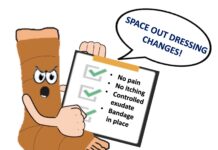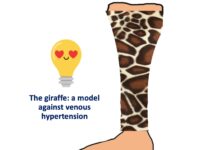Pain in a skin wound is triggered during dressing changes, which in some cases are daily. Dressing changes can become a real stress for our patients. It is not uncommon for them to develop maladaptive coping strategies, with significant associated anticipatory anxiety. This fear of pain causes them enormous suffering, alters doctor-patient relationship and, given that it will determine the intensity of debridement, can influence healing time.
We will dedicate another post to talk about different conventional analgesic and anaesthetic strategies that we can use to improve the tolerance of dressing changes. However, many times the pharmacological treatment is not enough and it is necessary to increase the dose, with the consequent side effects, possibility of habituation and dependence. Therefore, a comprehensive approach to pain during treatment is necessary, with special attention to the management of associated anxiety. Today we are going to talk about a less traditional technique: music therapy.
Music therapy is the use of the effects of hearing or interpretation of sounds and melodies with psychotherapeutic objectives. There are different techniques and it may have applicability in multiple fields. It is possible to work on motor, cognitive, sensory and social-emotional skills.
Pain is multidimensional, with a sensory, cognitive and affective component. This cognitive-affective dimension is highly conditioned by previous painful experiences, their interpretation and anticipation. The environment, predominantly the relationship with healthcare professionals, has a great influence. The aim of the use of music in patients who have to undergo painful interventions is to achieve adequate relaxation, stress reduction and anxiety. Music, not its distracting effect, has a potential analgesic and anxiolytic effect.
Some studies have been published on the benefits of its use to reduce pain during treatment, mainly in burn units. The results are positive, with greater relaxation and less anxiety.1-3
Most of the proposed methods are active music therapy and involve training of the nursing staff by a music therapist. This would explain how to apply and sequence the different musical protocols, in combination with the use of images and relaxation techniques to optimise the focus on the music.
Although having the help of a music therapist would be ideal, the reality is that in most cases we do not have this possibility. However, the experience is also very good in wound units that use music during dressing changes without the intervention of a specialized therapist, selected by the patient (passive music therapy).4 If we associate relaxation (breathing) and distraction (talking to the patient) techniques with ambient music, we will enhance the benefit. Nowadays we have applications that allow us to select and listen immediately to the type of music we prefer. The patient will feel more autonomous, with more control, in a safe and familiar environment, if he can select the music he likes and distracts. On the other hand, music also has a positive effect on the work of healthcare professionals.
Francisca Martín, a dermatology nurse in Hospital Universitario Gregorio Marañón and great friend, with whom I began to do my first dressing changes during my residency,is very clear about it: with music, much better. So do I.
Referencias:
Also available in: Español (Spanish)







